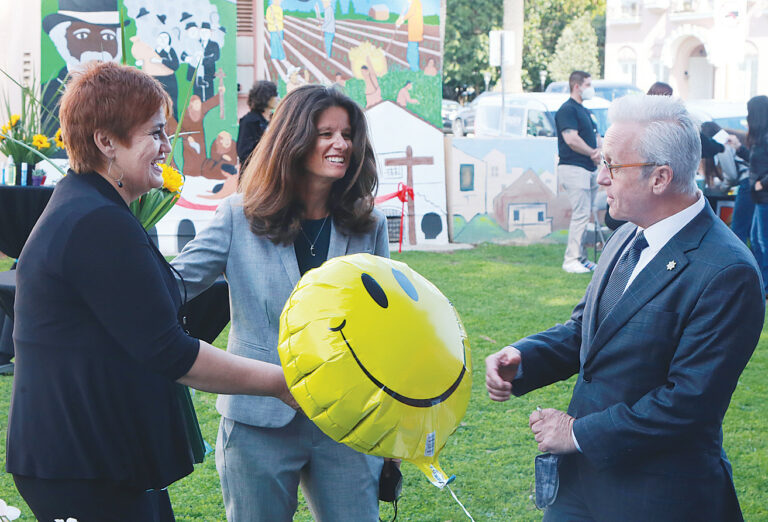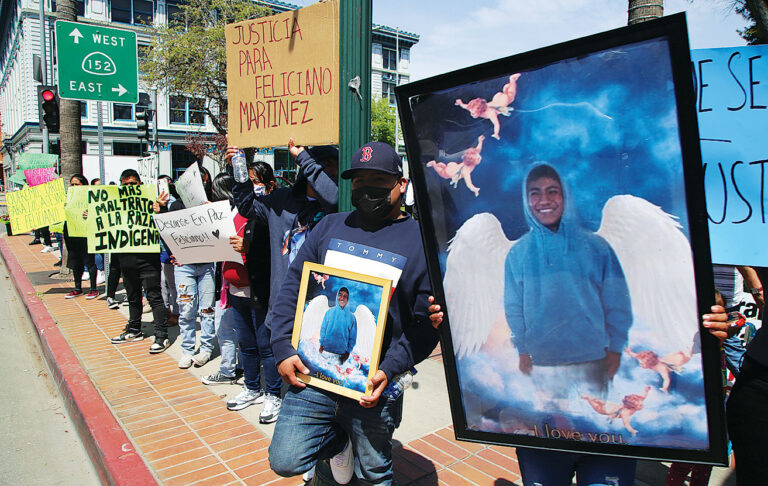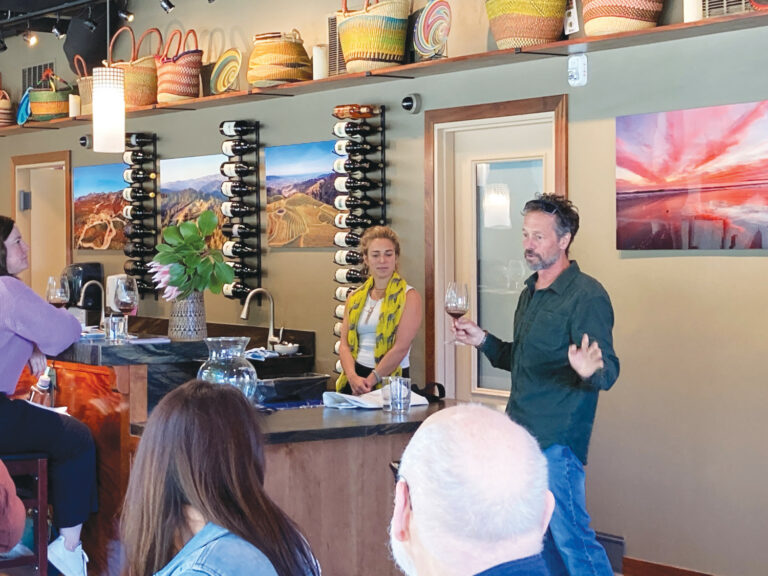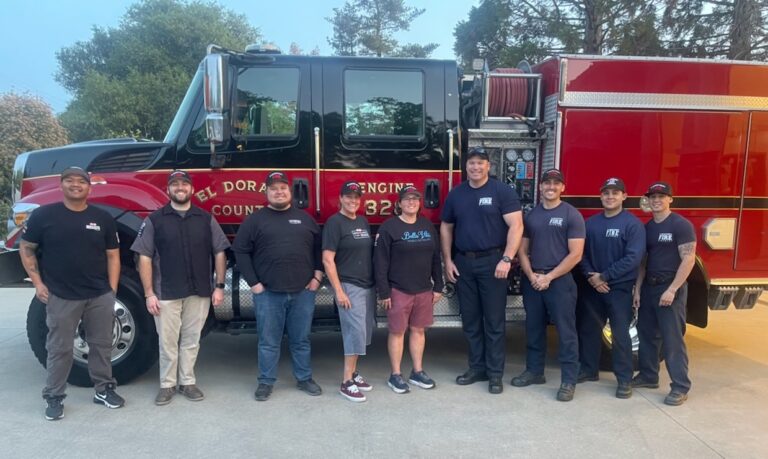When the city of Santa Cruz was threatened with a lawsuit back in 2020 for violating the California Voting Rights Act (CVRA), it was because of a claim that voting in Santa Cruz is racially polarized.
Only two people of Latinx descent have been elected to the city council from 2000 to 2018, despite Latinx residents representing around 30% of Santa Cruz’s population. Currently, no people of Latinx descent sit on the city council. The lawsuit not only alleged that Latinx residents were underrepresented, but that the current at-large system weakened the Latinx community’s chance at equal representation.
City officials have denied the claim, but fighting the lawsuit would have been costly: the city’s attorney says it would cost upwards of a million dollars to challenge the lawsuit—and it would likely be a losing fight.
Now, the city is making the transition from at-large elections to district elections that, in theory, will address issues around minority representation. But how does race get prioritized when a city is creating its districts? According to federal law, even if racial discrimination was the catalyst for a city’s move to district elections, race can’t be the main consideration while district lines are being drawn.
That’s according to Doug Johnson, president of the National Demographics Corporation (NDC) and consultant for Santa Cruz’s shift to district elections.
“Under the California Voting Rights Act, the question of whether you have district elections or not is almost entirely based on racial demographics and racial voting patterns. But the question of how the districts are drawn, that’s a separate question,” says Johnson.
In an at-large system, candidates are voted into office by the general population in a jurisdiction-wide election. But, come November, Santa Cruz will shift to district elections, where candidates will run to represent their respective neighborhoods on the city council. In the upcoming June election, voters will decide whether the city will have six districts with a directly elected mayor, or seven districts with a mayorship determined by the council—the item will show up on the ballot as Measure E.
What’s at stake in the next few weeks is how these neighborhoods will be split up.
How the districts are drawn now is important. Even though they can be redrawn every 10 years alongside shifting census results, the core of each district will likely remain the same.
“[Right now] you are setting up the districts that, while they will be revised every 10 years, will be the basis that those revisions will be made on for decades to come,” said Johnson at a community meeting on March 29, where he presented draft district maps for public input.
These districts must adhere to a set of criteria put forward at the federal level, criteria that aren’t associated with the CVRA. For instance, demographers are federally obliged to ensure the population must be nearly equal in each district, that the districts should be contiguous and the communities within a district should have similar interests and concerns, also known as “communities of interest.”
So in a voting system change-up spurred by claims of a lack of Latinx representation, how is race balanced with other criteria that demographers must consider when drawing the districts? How much is up to the purview of the demographer, and what is constricted to law?
How The Maps Are Made
First comes public hearings. After two public hearings, a demographer begins drawing draft maps.
Demographers look at population data, and then data that makes communities similar such as the percentage of renters, income and education levels and age. Then a demographer will look at natural landmarks that would serve as a logical division of the boundaries, like a river.
“Basically, the districts should make sense to someone living there,” Stephanie Smith says.
Smith is the Director of Election Services at Best Best & Krieger (BB&K) law firm, which has helped cities across the state transition to district elections.
These districts, she says, should be intuitive for the people living there.
“A person familiar with the community should be able to draw them from memory,” Smith says.
Importantly, if a district can easily be drawn so that a minority group is the majority of the demographic, demographers have an obligation to do so. But at the same time, Smith says there’s some interpretation that every demography agency has to do, and that’s not necessarily the goal when drawing districts.
“It’s really a subjective process, and every agency is different,” Smith says. “Every agency has to take into consideration where their minority population lives: do they live in concentrated areas, or are they dispersed throughout the community? The courts have never established, though, a bright line that determines what’s the necessary minority make-up of a district.”
While Smith said all the demographers she has worked with strive to be neutral—she likened demographers to Switzerland—because drawing districts does have some degree of subjectivity, it’s common for agencies to be accused of partisanship. Such was the case for Watsonville’s consultant Michael Wagaman, who, before his work with the county’s southernmost city during the most recent redistricting process, was criticized by conservative lawmakers for his work with the California Democratic Party.
So too is the case for Santa Cruz’s demographer agency, NDC. When Arizona chose NDC again to redraw its districts, Arizona Democrats criticized the decision, many saying the maps NDC drew in 2001 diminished minority voting power.
Johnson said that in those cases, after everything was said and done, Democratic commissioners spoke highly of NDC’s work, and praised the agency’s impartiality upon seeing the final maps.
The key to impartiality, he says, is transparency, and in a city like Santa Cruz, where there’s really only one geographic area where minority voting power can be concentrated—the Beach Flats—transparency is easy to achieve.
According to one of the maps Johnson presented to the public that mapped out the percentage of Latinx residents who are citizens and of voting age, the areas where Latinx people who fit that criteria mainly live is the Beach Flats and Lower Ocean area.
But even in a district that encompasses those areas, Latinx people still wouldn’t constitute a big enough portion of the population to be a majority—but it would be close. In the Beach Flats and Lower Ocean area, Latinx people comprise 47% of residents, compared with 17% of residents citywide, according to a 2012 report.
Because the Latinx population is relatively small for the city of Santa Cruz, Johnson says, drawing districts is less ethnicity-driven and more about the socioeconomic differences between the different neighborhoods. It’s also why local input is so important.
“The local input is the best source of that general information,” says Johnson. “Because the data we have on income and things like that is the best the Bureau has, but it’s not that fine-tuned for smaller cities like Santa Cruz.”
The Maps
At the March 29 community meeting where Johnson presented the draft map for both the six and seven district scenarios, callers reiterated two main concerns: what to do with UCSC and how to create a stronger minority district.
In some of the maps presented to the community, the Beach Flats and Lower Ocean neighborhoods are split into separate districts. Residents and council members alike commented on the need for those neighborhoods to be grouped in one district.
“We’re responding to potential lawsuits alleging that we have an inadequate process to ensure minority representation on the city council,” resident Rafa Sonnenfeld called in to say. “The best way for us to ensure minority representation on city council would be to have as close to a minority district as possible.”
Fez Fazilat, a longtime Santa Cruz resident of Middle Eastern descent who has lived in the Beach Flats for the past six years, said that too often his neighborhood’s concerns go unheard.
“We have a lot of issues in my neighborhood. City officials come and they talk to the community and host these events,” said Fazilat. “You know, it’s like it gives folks in the community the sense that we’re being heard, but, really, everything that gets discussed is put off to the wayside.”
Fazilat doesn’t think district elections are the solution to this issue. And depending on how the Beach Flats get lumped into neighboring communities—like the downtown area—he wonders if they will even get a better chance at representation, or if his neighborhood will continue to get overshadowed by the interests of more affluent residents.
Meanwhile, other residents are wary of being lumped into a district with UCSC, some calling into the meeting and saying their voice will be swallowed up by student voters.
But Zennon Ulyate-Crow, a first-year student and president of the Student Housing Coalition who submitted a draft map to the council, said that having UCSC as its own district would decrease the chances of having a student representative on the council, which is ultimately what he hopes to see. This is because representatives need to live in the area they represent, and most students move off campus after two years.
“For students, there are two main issues: transportation and housing,” said Ulyate-Crow. “UCSC is one of the most diverse hubs in Santa Cruz, and you look at the base of the campus and there are mostly white, single-family homes. When we talk about people being concerned about interests being overshadowed by the university’s interests, well, it’s like whose interests are being overshadowed?”
In the coming days, Johnson will release updated maps, including some that will include the Beach Flats and Lower Ocean areas in one district, and some that split up UCSC and keep it in its own district.
On April 19, there will be a final hearing on these draft maps before the maps go to the council, where the elected leaders will choose which maps to present to voters: one for a six district election, and one for a seven district election.
Ultimately, what really makes a transition to district elections successful in furthering minority representation, Smith says, often comes down to the community.
“My thought is that if the community is engaged and involved, and the maps create majority minority voting districts, I think that the community will see a future minority representation,” says Smith.
[Editor’s Note: This article has been updated to clarify that NDC did not author the district maps that were thrown out by the Ohio State Supreme Court. While NDC was brought in to work on a map during the current string of district maps that have been rejected by the court, it was not adopted by the Ohio Redistricting Commission.]
























